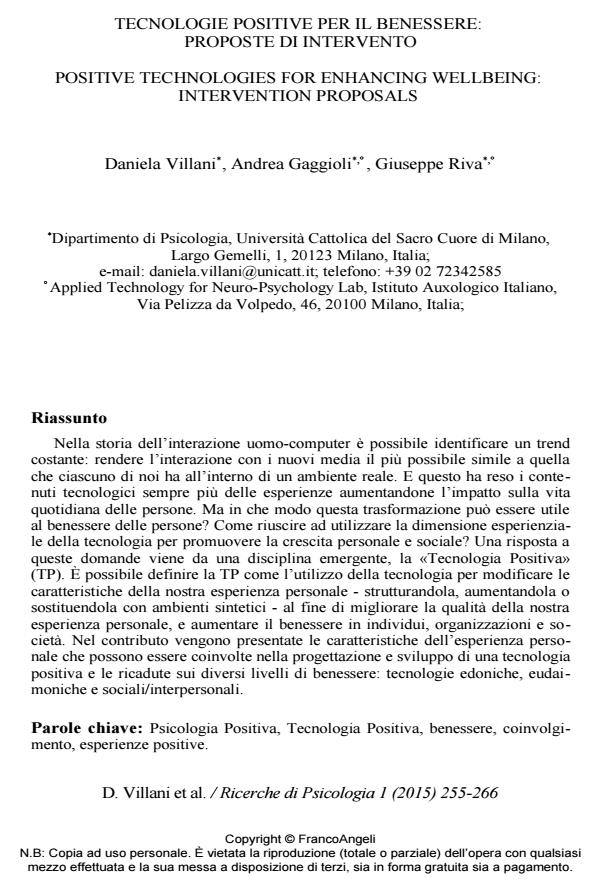Tecnologie positive per il benessere: proposte di intervento
Titolo Rivista RICERCHE DI PSICOLOGIA
Autori/Curatori Daniela Villani, Andrea Gaggioli, Giuseppe Riva
Anno di pubblicazione 2015 Fascicolo 2015/1
Lingua Italiano Numero pagine 12 P. 255-256 Dimensione file 221 KB
DOI 10.3280/RIP2015-001016
Il DOI è il codice a barre della proprietà intellettuale: per saperne di più
clicca qui
Qui sotto puoi vedere in anteprima la prima pagina di questo articolo.
Se questo articolo ti interessa, lo puoi acquistare (e scaricare in formato pdf) seguendo le facili indicazioni per acquistare il download credit. Acquista Download Credits per scaricare questo Articolo in formato PDF

FrancoAngeli è membro della Publishers International Linking Association, Inc (PILA)associazione indipendente e non profit per facilitare (attraverso i servizi tecnologici implementati da CrossRef.org) l’accesso degli studiosi ai contenuti digitali nelle pubblicazioni professionali e scientifiche
Nella storia dell’interazione uomo-computer e possibile identificare un trend costante: rendere l’interazione con i nuovi media il piu possibile simile a quella che ciascuno di noi ha all’interno di un ambiente reale. E questo ha reso i contenuti tecnologici sempre piu delle esperienze aumentandone l’impatto sulla vita quotidiana delle persone. Ma in che modo questa trasformazione puo essere utile al benessere delle persone? Come riuscire ad utilizzare la dimensione esperienziale della tecnologia per promuovere la crescita personale e sociale? Una risposta a queste domande viene da una disciplina emergente, la «Tecnologia Positiva» (TP). E possibile definire la TP come l’utilizzo della tecnologia per modificare le caratteristiche della nostra esperienza personale - strutturandola, aumentandola o sostituendola con ambienti sintetici - al fine di migliorare la qualita della nostra esperienza personale, e aumentare il benessere in individui, organizzazioni e societa. Nel contributo vengono presentate le caratteristiche dell’esperienza personale che possono essere coinvolte nella progettazione e sviluppo di una tecnologia positiva e le ricadute sui diversi livelli di benessere: tecnologie edoniche, eudaimoniche e sociali/interpersonali.
Parole chiave:Psicologia Positiva, Tecnologia Positiva, benessere, coinvolgimento, esperienze positive.
- 2017 International Conference on Virtual Rehabilitation (ICVR) Vera Colombo, Davide Baldassini, Stefano Mottura, Marco Sacco, Maura Crepaldi, Alessandro Antonietti, pp.1 (DOI:10.1109/ICVR.2017.8007457)
Daniela Villani, Andrea Gaggioli, Giuseppe Riva, Tecnologie positive per il benessere: proposte di intervento in "RICERCHE DI PSICOLOGIA " 1/2015, pp 255-256, DOI: 10.3280/RIP2015-001016